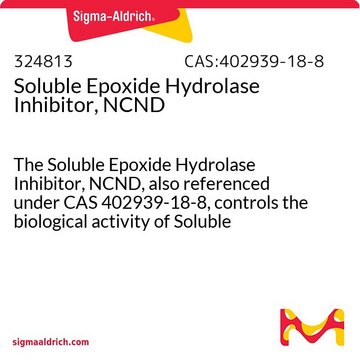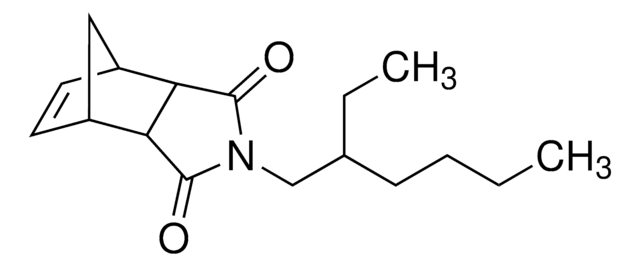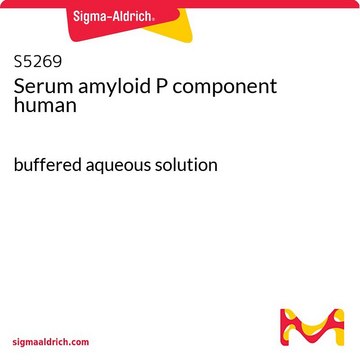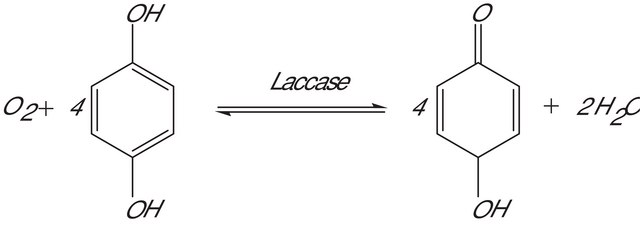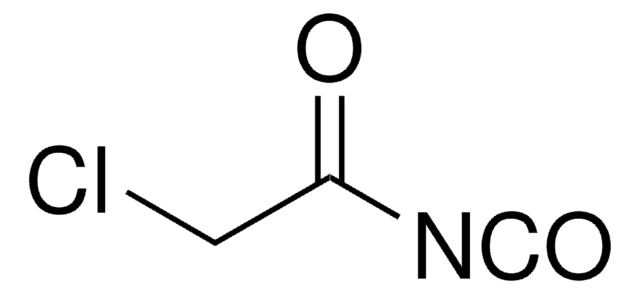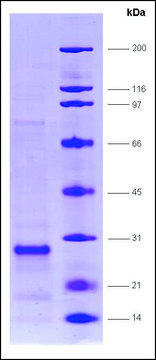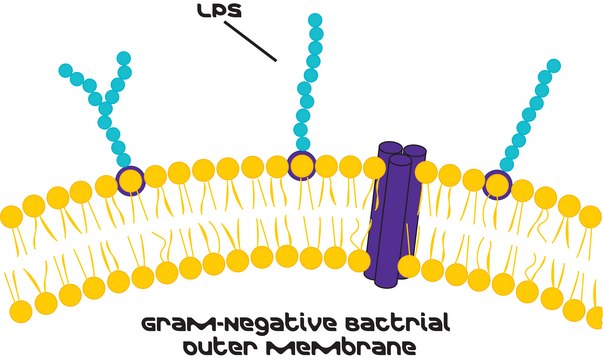推荐产品
重组
expressed in E. coli
表单
powder
powder with small lumps
比活
≥0.13 U/mg
储存温度
2-8°C
应用
Epoxide hydrolase is used to study drug metabolism. It allows the excretion of various drugs from the body. Epoxside hydrolase is used to study DRESS syndrome, which results from a lack of the enzyme, and is also used to develop novel inhibitors . Product 50727 is used to hydrolyze p-nitrostyrene.
生化/生理作用
Epoxide hydrolase converts epoxides to trans-dihydroldiols, which are excreted from the body .
包装
Bottomless glass bottle. Contents are inside inserted fused cone.
单位定义
1 U corresponds to the amount of enzyme which hydrolizes 1μmol p-nitrostyrene per minute at pH 7.2 and 25°C
警示用语:
Danger
危险声明
危险分类
Resp. Sens. 1 - Skin Sens. 1
储存分类代码
13 - Non Combustible Solids
WGK
WGK 3
闪点(°F)
Not applicable
闪点(°C)
Not applicable
法规信息
新产品
Bichitra K Biswal et al.
Journal of molecular biology, 381(4), 897-912 (2008-07-01)
Mycobacterium tuberculosis (Mtb), the intracellular pathogen that infects macrophages primarily, is the causative agent of the infectious disease tuberculosis in humans. The Mtb genome encodes at least six epoxide hydrolases (EHs A to F). EHs convert epoxides to trans-dihydrodiols and
Ana W Y Cheong et al.
Biology of reproduction, 81(1), 126-132 (2009-03-27)
Somatic cell-embryo coculture enhances embryo development in vitro by producing embryotrophic factor(s) and/or removing harmful substances from the culture environment. Yet, the underlying molecular mechanisms on how somatic cells remove the toxicants from the culture medium remain largely unknown. By
Zhuo Shao et al.
Arteriosclerosis, thrombosis, and vascular biology, 34(3), 581-586 (2014-01-25)
Regulation of angiogenesis is critical for many diseases. Specifically, pathological retinal neovascularization, a major cause of blindness, is suppressed with dietary ω3-long-chain polyunsaturated fatty acids (ω3LCPUFAs) through antiangiogenic metabolites of cyclooxygenase and lipoxygenase. Cytochrome P450 epoxygenases (CYP2C8) also metabolize LCPUFAs
Gary P Carlson
Journal of toxicology and environmental health. Part A, 74(6), 347-350 (2011-01-29)
Styrene is hepatotoxic and pneumotoxic in mice. Styrene oxide, the active metabolite, is detoxified via hydrolysis by microsomal epoxide hydrolase (mEH). Racemic styrene oxide was previously found to be more lethal and produced increased toxicity in mEH-/- mice compared to
我们的科学家团队拥有各种研究领域经验,包括生命科学、材料科学、化学合成、色谱、分析及许多其他领域.
联系技术服务部门

